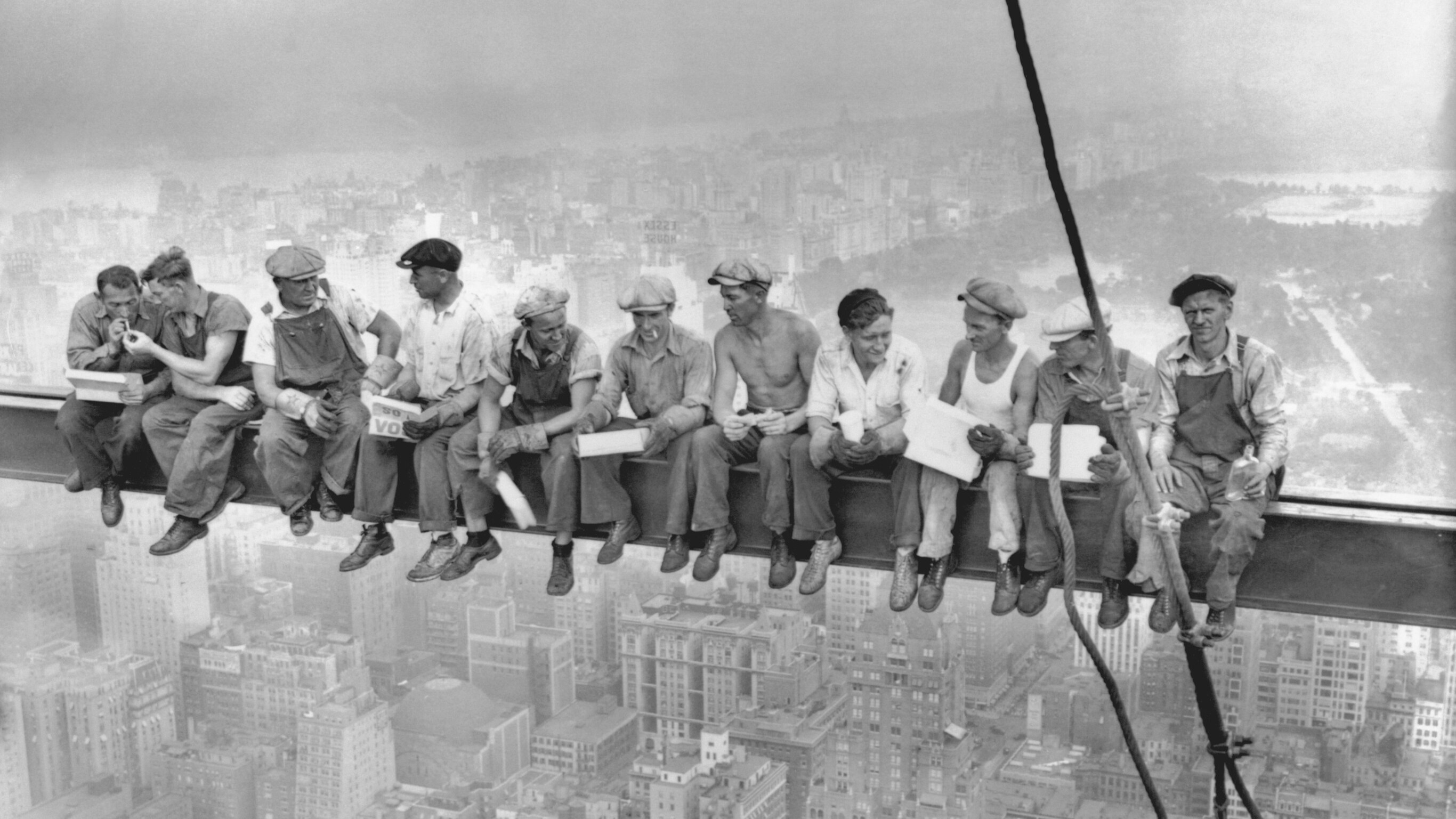Palace of the Wolves
Lunch atop a Skyscraper by Charles Clyde Ebbets
!!!You have entered a CONSTRUCTION ZONE!!!
Watch your step, and be aware that content can be changed at any time.
Architecture
The Palace of the Wolves was completed in 1690, utilizing the architecture of the Late Adrausii Renaissance.
The structure surrounds a large central courtyard with a grand statue of Theoderich I along with his direwolf companion, Luka. The building utilized quarried limestone forms for the main walls with dark granite accents and black soft gray mortar to help the bricks shine. Many of the supports of the palace were originally made of ironwood and oak, but were replaced with silver-coated iron supports in the early 1800s by Jarich un Rathenau to help prevent spirits from entering the palace. Its roofs are steeply pitched with dark slate tiles from the Sereskalen Mountains, and are designed to withstand heavy snow and rain but also resemble the northern peaks of the Sereskalen mountains. The gutters are also gilded in copper and brass.
The interior is filled with Rich tapestries representing the Un Rathenau's family history, as well as busts of the family since taking power. The Palace of the Wolves remains one of the most enduring symbols of the Kingdom of Adraus, both for its architectural grandeur and its representation of the kingdom’s complex relationship with the spirit realm. Even after the reign of Theoderich un Rathenau III ended in 1897, the palace continued to inspire artists, scholars, and rulers who seek to honor the fragile balance between human ambition and spiritual harmony.
History
While the Rathen's origins date to the early 1100s as a fortified trade city at the confluence of the Adan River and the Volken River. It was not until the city was elevated to capital status in 1639 with the ascension of Theoderich un Rathenau I, that the city entered into an era of importance and prosperity. Theoderich I's reign marked an era of centralized power and centralized rule which had been struggling to flower in the nation for the last few centuries. As the Un Rathenau family consolidated their rule, they envisioned a palace that would reflect their dynasty’s strength, wisdom, determinaton.
Though initially planned to commemorate the 50th anniversary of Rathen’s capital status, the Palace of the Wolves faced numerous delays caused by architectural innovations and the intricate craftsmanship required to incorporate both earthly grandeur and spiritual symbolism. Completed in 1690, it stands as a monumental tribute to the lineage and the kingdom’s ambitions.
Founding Date
1676
Type
Palace
Parent Location
Additional Rulers/Owners
Ruling/Owning Rank




Comments